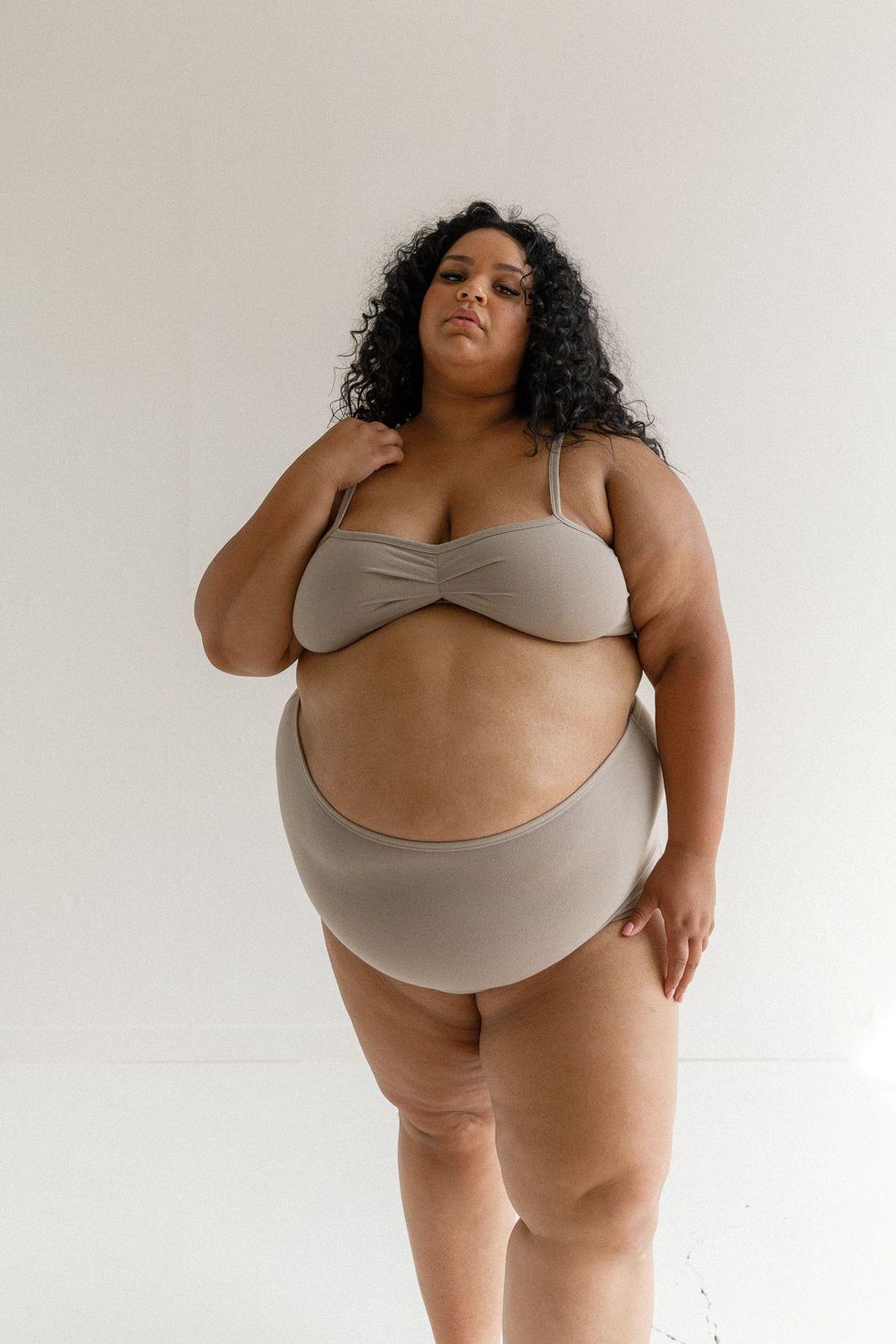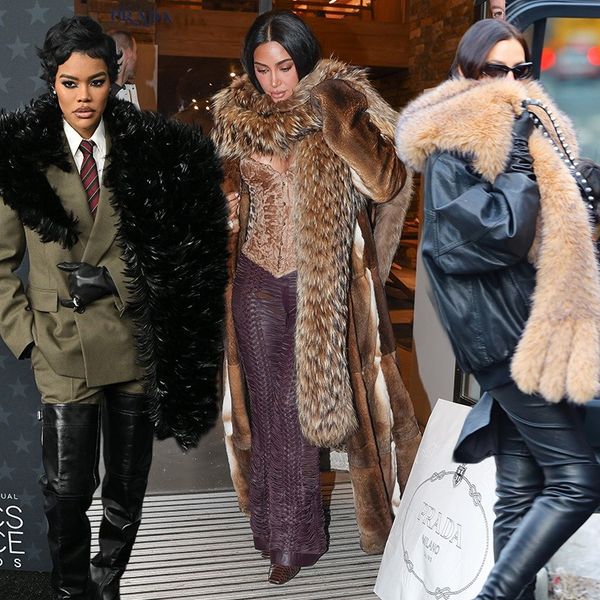Underwear Ads Are a Mirror for Society’s Relationship with Body Image
Tracking the progression from Victoria's Secret to Savage X Fenty.

With the launch of Rihanna's latest Savage X Fenty show, scantily-clad women of all shapes and sizes will ascend to the stage today. Though the production nods to ideas commercialized by its Victoria's Secret predecessor, the theatricalities highlight some of the progress society has made in the past decade or so around the "ideal" woman's body. It seems few other product spheres (and their corresponding marketing departments) possess the same hold on society that the underwear arena does.
Underwear advertisements raise many questions about advertising, body image, and, well, sex. Despite recent advancements, fashion in its entirety outwardly subscribes to a eurocentric beauty ideal that favors a slim, young, caucasian woman. Nowhere is that more evident than in an underwear advertisement where the subject's entire body is on display. So, naturally, society's progression towards body positivity is depicted in that omnipresent imagery.
Photo: Courtesy of Savage X Fenty
"An underwear ad can make us feel really good about ourselves or really vulnerable," explains Dr. Aurore Bardey, Associate Professor in Marketing at the Burgundy School of Business in Dijon, France. Perhaps that's why they have been so extremely pervasive in society. Few advertisements have reached the fame that #inmycalvins did as models, celebrities, and influencers posed in their casual branded undies as they went about their day-to-day life. And despite its notoriety, many of us tuned in to watch the Victoria's Secret Fashion Show in the circa 2012 era in a manner akin to that of the Super Bowl. No matter how jaded we become, there's something so intimate about seeing someone in their underwear.
The most obvious shift between the ads of the 2010's and the CUUP's or ARQ's of today? The casting. In 2014, Victoria's Secret caught major flak for their "Perfect Body" campaign. The ad featured 10 stick thin models with albeit some but little racial diversity and effectively showed the public what the company deemed "perfect." Though the brand had launched many prior campaigns similar in nature prior, the uproar was much more tangible with a petition on Change.org that garnered over 26,000 signatures and signaled a change in the consumer's role in this equation.
"It was the start of a movement asking for more body positive messages, more representations of bodies or body sizes, and more inclusivity," says Bardey. This mindset has continued as Savage X Fenty has knocked Victoria's Secret out of the lingerie industry's driver seat. Unifying cultural changes have allowed consumers to feel more comfortable in making demands, as well. "In the study of the #MeToo and Black Lives Matter movements, we see a wide societal shift," outlines Bardey. "We can see an increased demand for body positive messages and more inclusivity."
Whether it's the outright approach at Victoria's Secret or the more subtle Calvin Klein perspective, underwear advertisements have historically been linked to sex and desire. Abigail Quist, founder of underwear brand ARQ, favors a less overtly sexualized form of communication. Though she hasn't squashed sex out of her ads completely, the photos present a foil to those of the decade prior.
Their images depict women adorned in their no-frills underwear in their size range from XS to 4X in undoctored settings. With the conception of ARQ's advertisements as a simple means to present the garments she was designing, Quist didn't plan for disruption though she may have achieved it. "What is important to us is showing a range of body types in our garments, in their natural state, comfortable and empowered," says Quist. "We are about comfort, and not about promoting any particular body ideal."

Photo: Marissa Boone
While Quist favored a product-first approach, Bardey twice reiterated that the conversation of the previous decade had nothing to do with the underwear itself but instead centered around the choices in marketing. Aside from the casting, the images have historically depicted society's idea of what is sexy, but for whom? While women are the ones purchasing and wearing the underwear, the ads often cater to men.
"When we were first coming into this, I was always really, really shocked that underwear was sold to us as women as performative," recounts CUUP founder Abby Morgan. "It's like, 'look how sexy you can look in this for someone else.' Since there was nothing else, it kind of spoke to us." Morgan didn't necessarily want this but she also didn't want to identify with the reductive approach of eliminating sex and desire from the conversation altogether.
So where does desire fit actually into the conversation? "With our approach, we wanted to really make it sensual. We wanted this gaze to be for her because that's where sensuality is defined," says Morgan. "Meaning what makes you feel sexy and sensual is very different from what makes me feel sexy and sensual and that's beautiful."
Drawing on lingerie references from the '90s, CUUP's imagery highlights women, again of all sizes, performing their daily rituals, of course, in their underwear. In describing it all, Morgan favors the word sensual in lieu of sexual to represent the final result and applies that logic to all women versus restricting its application to a single body type.
Whether you like it or not, it seems underwear brands shape the narrative of what society deems sexy through the images they put forth. With great power comes great responsibility, so female founders have taken that onus upon themselves to redefine the idea of desire in imagery. To really boil the conversation down to fundamentals, Victoria's Secret was started by a man and none of the others in question were. Correspondingly, Victoria's Secret was selling sex in a very perfume-ad-like manner. Brands today? They are simply selling underwear.
Top photo: Courtesy of CUUP
Want more stories like this?
When Did Crocs Become a Metaphor for Shifting Societal Norms?
10 Rising Designers That Are Changing the Face of Fashion
These 12 Fashion Items Guarantee a Wave of Nostalgia




